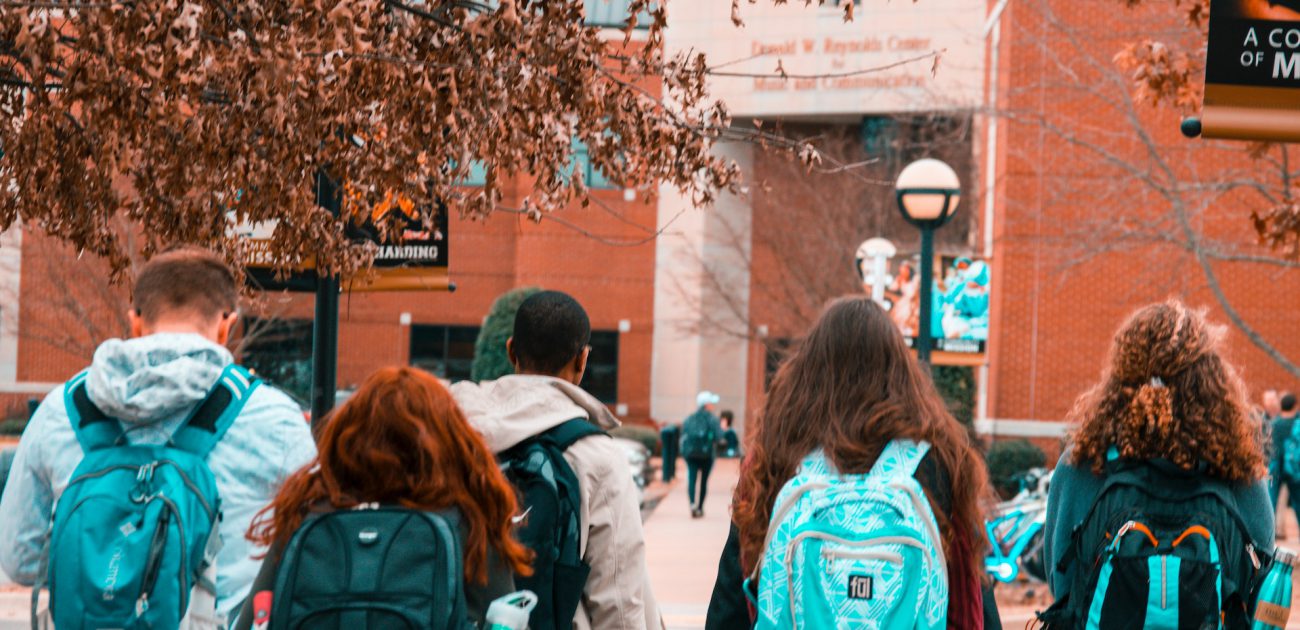User-generated content (UGC) is an invaluable tool for higher ed social media marketers, helping them level up their content creation capabilities while building brand trust.
According to TINT, three-quarters of consumers find reviews and testimonials submitted by real people more credible than brands talking about themselves. Meanwhile, 93% of marketers agree that consumers are more likely to trust UGC than brand-created content.
But what, exactly, do we mean by “user-generated content”? And what does it look like in the field of higher education? Read on to find out.
What is User-Generated Content?
User-generated content is original content created by people rather than by brands themselves. Brands then share this content via channels like social media and email marketing.
Common UGC content types include images, videos, and reviews.
In a higher ed context, user-generated content is most likely to come from one of these sources:
- Students. Students generate the vast majority of higher ed-related UGC because there are so many of them. Examples include campus tours and day-in-the-life videos.
- Faculty. These subject-matter experts play a key role in attracting prospective students. They might discuss their expertise or offer their take on developments in their field.
- Alums. Former students are an essential source of funding. They might create content reminiscing about their college days, from their favorite lecturers to iconic campus locations.
10 Top User-Generated Content Examples
Okay, so we know what user-generated content means and understand where you can find it. Now, let’s look at 10 UGC marketing examples from the higher ed world.
1. Harvey Mudd College
What better place to start than the classic student day-in-the-life (DITL) video? This format — probably the most common form of higher ed UGC — involves a current student showing what it’s like to live and study at a college.
Harvey Mudd College enlisted one of its sophomore engineering students to create this video, which the institution shared on Instagram and TikTok:
@hmcadmission A day in the life of an HMC sophomore! #harveymuddcollege #harveymudd #claremontcolleges #college #collegelife #stem #engineering ♬ Aesthetic – Tollan Kim
This post is the perfect DITL example because it shows a variety of activities and settings. The student in question spends plenty of time with friends, but they’re also hard at work — against a series of aspirational-looking on-campus locations.
2. Baylor University Athletics
If you’re fortunate enough to have some high-profile former alums, featuring them in your social media content can be a highly effective way to drive reach and engagement (especially if they’re prepared to share the content themselves).
But, as we already know, audiences often find branded content inauthentic and untrustworthy.
User-generated content is the perfect solution. In our following example, Baylor University Athletics shared an interview between legendary former Olympic sprinter and Baylor alum Michael Johnson and a current Baylor student, high jumper Moorea Long:
View this post on Instagram
Combining a famous alum and a current student makes this video feel natural and engaging rather than overly promotional, making it a more valuable marketing tool for Baylor’s athletics program.
3. UC San Diego
Sure, user-generated content is seen as trustworthy and credible. But that’s not the only marketing benefit it provides. On a practical level, it also allows marketers to share content they’d otherwise have missed out on, which is particularly helpful when covering timely events.
For instance, UC San Diego leveraged UGC to show off a twice-yearly phenomenon that’s become known as Scrippshenge, when the sunset perfectly aligns with the pier columns at the university’s Scripps Institution of Oceanography:
View this post on Instagram
Without UGC, the institution’s marketing team would have had to send someone to the pier to capture the perfect shot. Instead, they got to share someone else’s work — while still enjoying all the other benefits that UGC provides. It’s a no-brainer!
4. Harvard Graduate School of Education
An alternative to the ever-popular day-in-the-life video is combining user-generated clips captured over an extended period. That way, viewers get an insight into your campus’s appearance throughout the year.
Again, user-generated content is the perfect format for this content type. Branded videos can often look over-produced and too salesy, whereas videos recorded by students come across as far more natural — making for a more engaging piece of content.
Here’s an excellent example courtesy of Harvard Graduate School of Education and student Deepak Ramola:
@harvardeducation Deepak Ramola shares a few memories made so far – here’s to even more fun in 2023! ✨ | Audio courtesy of Extreme Music #harvard #hgse #harvarduniversity #ivyleague #gradschool #harvardlife #college #harvardstudent #yearontiktok #yearinreview #fallsemester #2022recap #recap ♬ original sound – HGSE
There’s something extremely wholesome about this video, which would be hard for the university to recreate itself.
5. Michigan State University
Another popular UGC format for higher ed is the campus tour video. As you can probably guess, this content type is about highlighting popular spots around your university, giving prospective students a feel for what it’s like to live and study there.
Michigan State University consistently uses this format to show off some of its best on-campus attractions, such as this video featuring the school’s dining hall:
View this post on Instagram
Admittedly, a dining hall might not seem like the most thrilling setting for your next TikTok video or Instagram Reel.
But put yourself in the shoes of future students: they will be interested in learning about some of the more mundane elements of university life. They won’t get much insight into the student experience if all you post is aspirational, professionally captured shots of sunsets over your campus buildings.
6. Carnegie Mellon University
No breaking news to share, no upcoming announcements to tease, and nothing in your content calendar; all higher ed social media marketers have days when they’re scratching around for content ideas.
On the (hopefully rare) occasions when that happens, user-generated content can be an invaluable source of evergreen content — the type of stuff you can post whenever you need it. Carnegie Mellon University shows us the value of having a bank of UGC you can rely on at these times:
View this post on Instagram
Of course, this isn’t just about posting for the sake of it. Sharing user-generated images and videos taken around your campus is always a valuable tactic for higher ed marketers, helping prospective students get a closer look at your university and imbuing alums with nostalgia that might ultimately prompt them to donate.
7. Massachusetts Institute of Technology
It’s easy to forget that current students aren’t your only source of UGC. Getting faculty members and leadership involved in the content creation process has plenty of benefits.
For one thing, audiences like it when senior leaders are engaged in social media. One study discovered that 70% of consumers feel more connected to brands when the CEO has an active social presence. It’s also extremely valuable from a higher ed perspective, given that “quality of academics” is consistently named as one of the top factors for students choosing a school.
Massachusetts Institute of Technology clearly understands all this. It recently launched a podcast in which the school’s president speaks to newly tenured faculty members on critical challenges facing their areas of expertise (and the world at large).
This podcast is a fantastic example of how user-generated content can help position your faculty members and senior leaders as thought leaders, enhancing the school’s reputation.
8. Columbia University
Between reaching out to alums and persuading future students to choose their schools, it can be easy for higher ed marketers to forget that current students are also a key audience.
After all, they’re your biggest advocates. If they love attending your institution, they’ll tell the whole world about it. And there’s nothing more valuable than word of mouth spreading your message. So it’s clearly in your best interests to help students have the best possible time.
One useful approach is to share tips about what to do on campus. For instance, with finals approaching, Columbia University shared a bunch of UGC imagery highlighting some of the best spots to study on campus:
View this post on Instagram
9. Brandeis University
Brand-created content can only ever give a superficial view of what it’s like to study at your school, whereas UGC gives your audience a behind-the-scenes look that can be far more informative.
For instance, Brandeis University challenged current students to participate in a dorm decorating competition. In this video, winner Rubaiya Nasim gives the school’s TikTok followers a guided tour around her room:
@brandeisuniversity Rubaiya Nasim ’23 is the winner of the Room Decorating Competition 2022, and got to give us a tour of her comfy, relaxing, & reenergizing space. #brandeis #brandeisuniversity #campus #collegelife #residencehall #room #studentlife #student #fyp ♬ Vibes – ZHRMusic
Showing your audience behind the doors of a real dorm helps them get a more realistic and meaningful impression of your school (even if Rubaiya decorated her room far more beautifully than your average college living space).
10. Stony Brook University
Of course, you want to be honest about student life at your institution. But you also want to demonstrate that your school is an enjoyable place to spend time.
Again, user-generated content is the perfect solution. Stony Brook University regularly shares video compilations showcasing the various events and activities taking place on campus:
@stonybrookuniversityLast Campus Lifetime of the (pre-finals) semester: Smashed. Car Smash hosted by Fraternity & Sorority Life, Center for Prevention and Outreadh & TKE. Diversity Day x Strawberry Fest hosted by FSA, USG, & Office of Multicultural Affairs.♬ So Much Happiness – Lux-Inspira
These videos make it feel like there’s always something going on at the university, positioning Stony Brook as a fun and friendly place to study.
Want to learn best practices in social media marketing from leading colleges and universities? Book your spot at our next social media conference for higher ed!
Here are some similar articles you might enjoy:
- How Higher Education Institutions Can Find and Work With Influencers
- The Higher Ed Social Media Tips and Tricks You Can’t Google
- Leveraging Students to Support Higher Ed Social Media Initiatives










